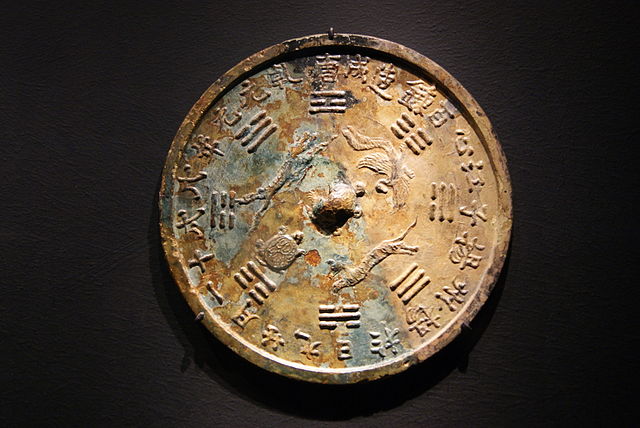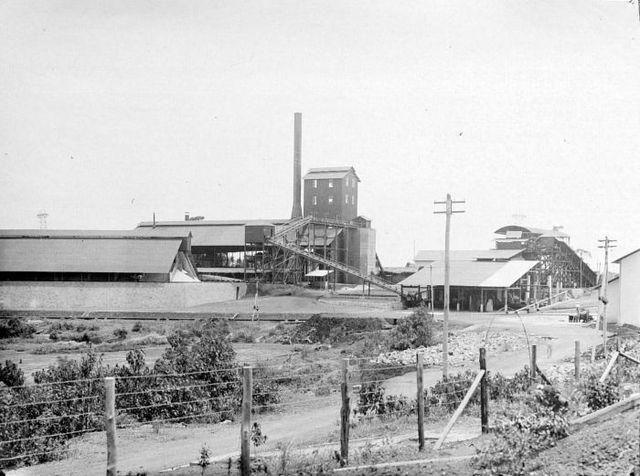The Belitung shipwreck is the wreck of an Arabian dhow which sank around 830 AD. The ship completed the outward journey from Arabia to China, but sank on the return journey from China, approximately 1.6 kilometres (1 mi) off the coast of Belitung Island, Indonesia. It is unclear why the ship was south of the typical route when it sank. Belitung is to the south-east of the Singapore Strait by 610 kilometres (380 mi), and this secondary route is more normal for ships travelling between China and the Java Sea, which is south of Belitung Island.
The shipwreck is of a dhow similar in size and construction to this one, in Oman.
A bronze mirror with a cosmological decoration and inscription, 8th century, with inscription that says "Made on the 29th day of the 11th month of the first year of the wuxu era of the Qianyuan reign"
Bowls from kilns in Changsha, Hunan
Two Tang oval lobed gold bowls each with two ducks in repoussé among chased flowers
Belitung is an island on the east coast of Sumatra, Indonesia in the Java Sea. It covers 4,859 km2 (1,876.1 sq mi), and had a population of 309,097 at the 2020 Census; the official estimate as at mid 2023 was 320,500. Administratively, it forms two regencies within the province of Bangka-Belitung Islands. The island is known for its pepper and for its tin. It was in the possession of the United Kingdom from 1812 until Britain ceded control of the island to the Netherlands in the Anglo-Dutch Treaty of 1824. Its main town is Tanjung Pandan. The United Nations Educational, Scientific and Cultural Organization has declared 17 tourist attractions in the Belitung Geopark as world geoparks.
Part of the plant of NV Billiton Maatschappij company in Belitung island, 1939.





